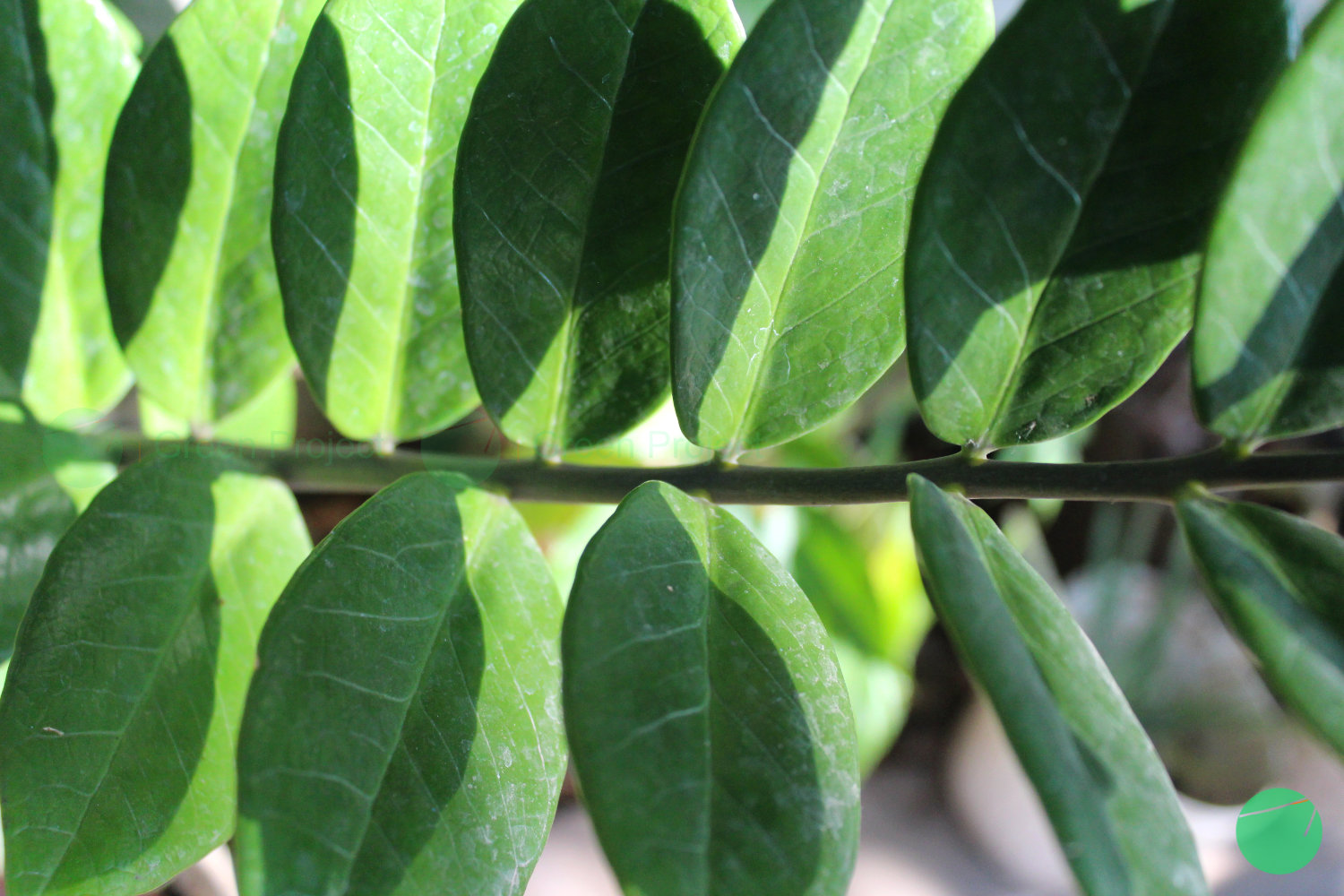Naming Identity
Pohon dollar is scientifically known in Latin as Zamioculcas zamiifolia. Popularly in English, this plant is known as ZZ plant, Zanzibar germ or aroid palm.
The species name, Zamioculcas zamiifolia refers to its Zamia-like leaves. Although Zamia is an unrelated genus.
Taxonomy
Kingdom | Plantae |
Phylum | Tracheophyta |
Class | Magnoliopsida |
Order | Alismatales |
Family | Araceae |
Genus | Zamioculcas |
Species | Zamioculcas zamiifolia |
Origin
Pohon dollar or ZZ plant is known to originate from the east African region which includes the countries of Kenya, KwaZulu-Natal, Malawi, Mozambique, Tanzania and Zimbabwe (Zamioculcas Schott | Plants of the World Online | Kew Science, 2023).

Description of Form and Growth
ZZ plant is a perennial herb that grows slowly and can reach a height of around 60 cm. The main characteristic of this plant is its leaves which have a shiny surface. Its round fleshy rhizomes produce glossy foliage that stores water and makes it very drought tolerant (Zamioculcas Zamiifolia (Aroid Palm, Emerald Palm, Eternity Plant, Zanzibar Gem, Zuzu Plant, ZZ Plant) | North Carolina Extension Gardener Plant Toolbox, 2023).
The leaves tend to be wide and thick with a length ranging from 5 cm to 7 cm. Generally, the leaves are dark green.
ZZ plant is also said to produce flowers in the form of cream-colored petals with a shape similar to lilies. They are small in size and usually hidden at the bottom of the leaf base (Balogh, 2022).
As an ornamental plant, this plant needs to be planted or placed in deep shade and in organic or sandy soil with good drainage. ZZ plant can also be said to be a low-maintenance tree. This is because maintenance tends to be easy, such as watering which does not need to be done every day, and fertilizing which does not need to be done frequently because it can store nutrients in the roots.
Although ZZ plant has been recognized botanically since 1892, its popularity can be said to have only really occurred since several decades ago. This is thanks to Dutch farmers who accepted the challenge of cultivating it in 1996 (Zamioculcas Zamiifolia, 2016).
ZZ Plant as a Poisonous Plant
ZZ plant in general are trees that are often used as ornamental plants, especially because they are easy to care for. Its use as a medicinal and food ingredient is not recommended because all parts of the dollar tree are known to contain poison.
Chewing or swallowing the tree can cause burning pain and swelling of the lips, mouth, tongue and throat. Contact dermatitis can also occur in sensitive individuals (Queensland Poisons Information Centre, 2023). However, it is believed that the poison contained in this plant is only enough to cause symptoms such as allergies and will not cause death.
This plant actually produces the same substance as kidney stones in humans, namely Calcium Oxalate. This substance has a crystal-like shape with sharp edges. This is what causes skin irritation if it comes into contact with the sap from the ZZ plant and can cause irritation to internal tissues if swallowed (Is a ZZ Plant Poisonous? (and How to Grow Them Safely) - Smart Garden Guide, 2019).